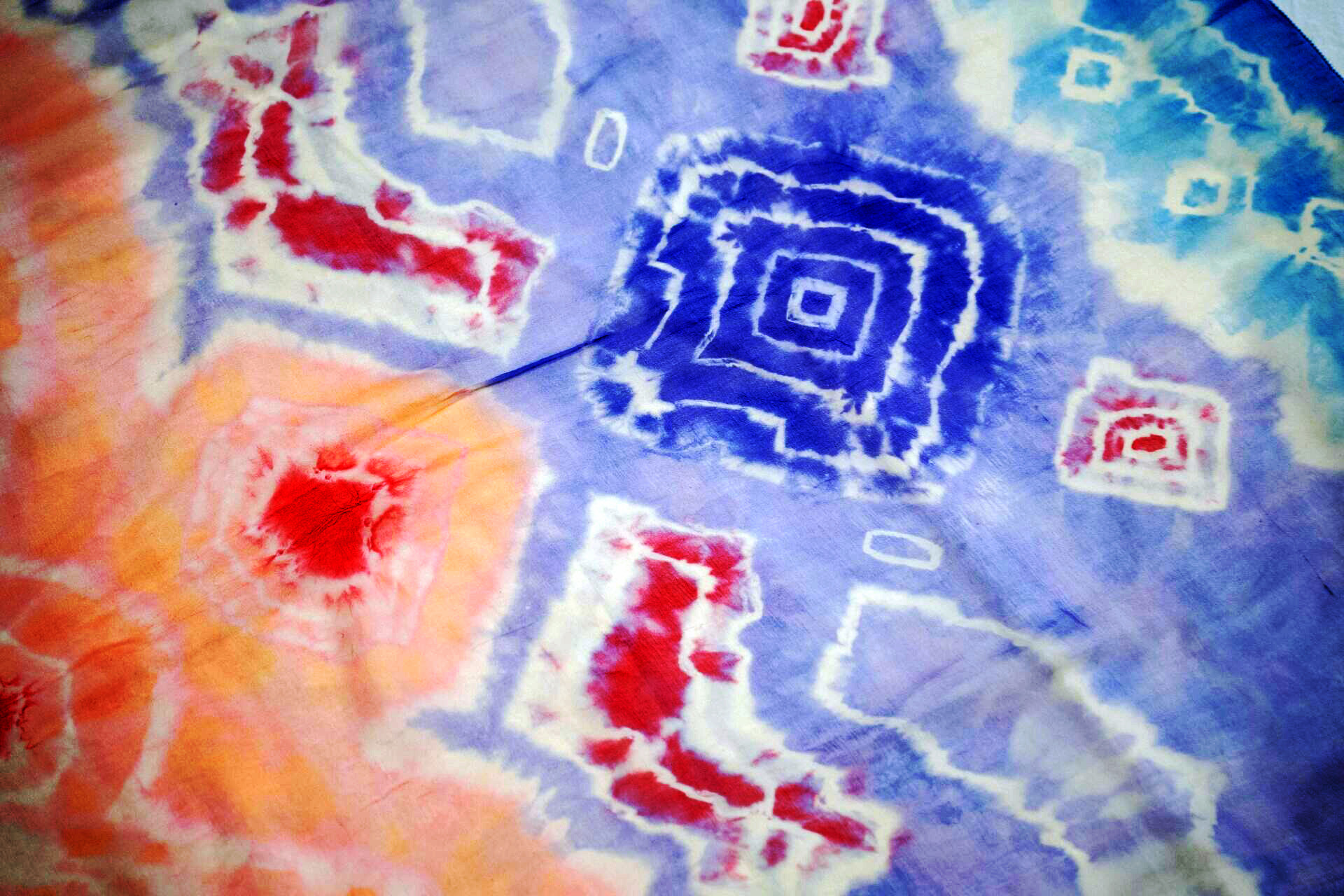
The popularity of tie-dyed clothing exploded in American popular culture in the 1960s and has been reborn in most decades since. But resist dyeing practices, or tie-dye as it’s commonly known, have been a part of textile traditions for centuries in diverse cultures around the world.
Examples of resist dyeing are being shown at Colorado State University’s Avenir Museum of Design and Merchandising in the exhibition Resist: Tie Dye Practices from Around the World.
Other Spring 2024 exhibitions include the whimsical designs of Fancy Flourish: Mary Frances Handbags, and Inside Out: Structures and Secrets, revealing typically unseen parts of garments. All three exhibitions were developed with objects from the Avenir Museum permanent collection.
The Resist exhibition runs from Feb. 13 to July 30. Fancy Flourish runs through May 4 and Inside Out is open through June 1.
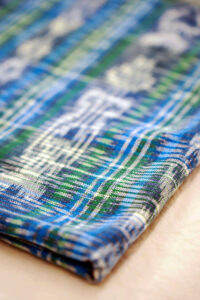 Telling the story of global tie-dye practices
Telling the story of global tie-dye practices
The Resist exhibition, which includes more than 50 objects, was developed by Paula Alaszkiewicz, museum curator and assistant professor in the Department of Design and Merchandising.
“Resist dyeing is a technique in which cloth is patterned during the dyeing process,” Alaszkiewicz said. “Different types of ‘resists,’ such as folds, twists and binds, physically prevent the dye from permeating the cloth. Various resist dyeing techniques have been practiced around the world for thousands of years.”
The Resist exhibition spotlights regional practices from India, China, Japan, Peru, Guatemala, Indonesia, Uzbekistan, the Yoruba peoples of West Africa plus popular do-it-yourself methods.
“There are two theories for how resist dyeing developed and spread around the world,” Alaszkiewicz said. “First, various cultures may have developed forms of resist dyeing independently of one another. Second, it may have spread through early trade and migration routes.”
There is interpretive text throughout the exhibition and, where possible, the museum highlights connections among the different items and their dyeing methods.
“Resist tells the story of global tie-dye practices in more than 50 objects, including flat textiles, a range of garments, from saris to sweatsuits, and vintage guidebooks with instructions on DIY tie dye,” Alaszkiewicz said.
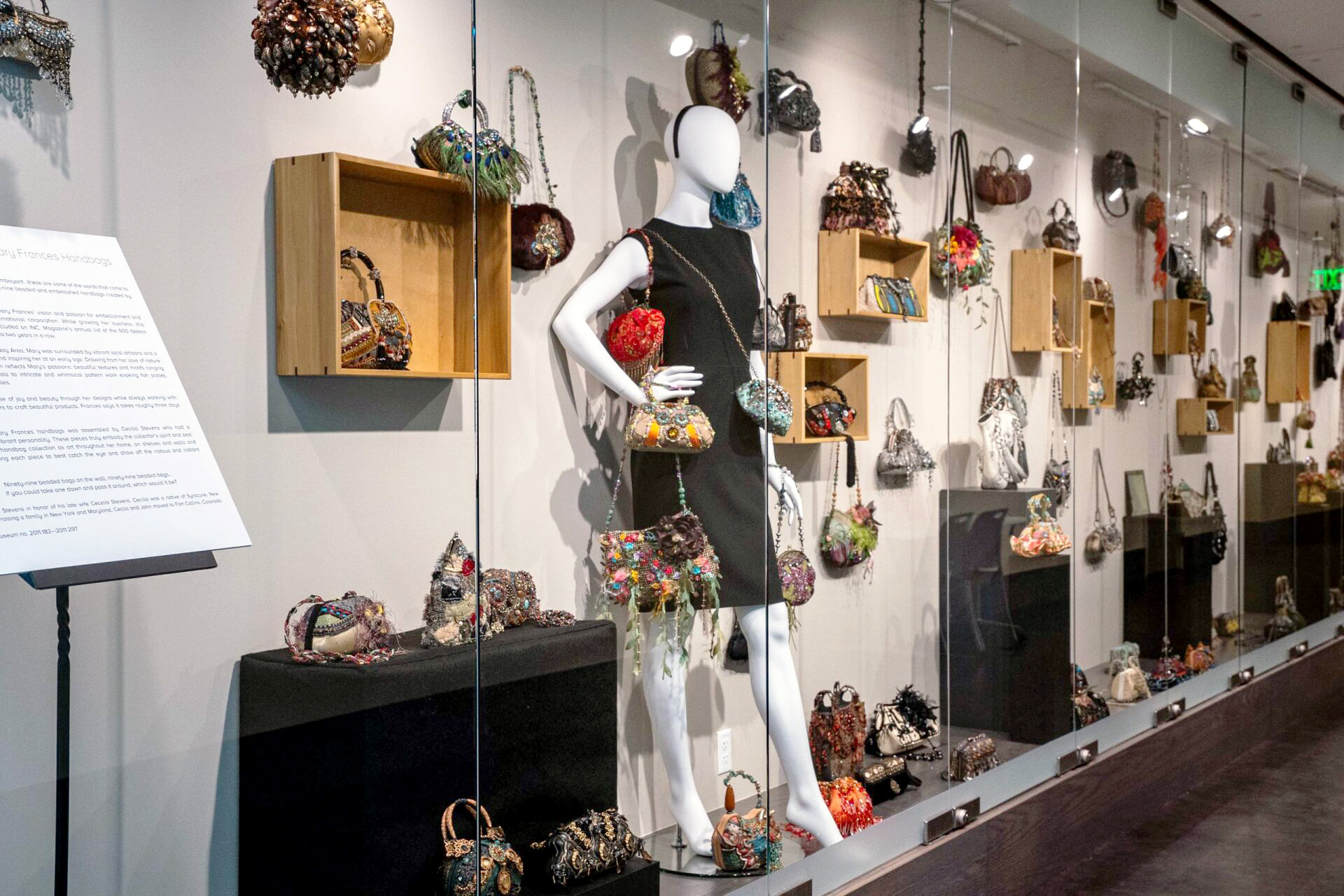
In the bag, 99 of them
The Fancy Flourish exhibition, developed by Megan Osborne, the museum’s assistant curator and collections manager, spotlights San Francisco-based designer Mary Frances’ eye-catching, elaborate handbags. These pieces reflect Frances’ passions for nature, travel and music in eclectic designs of beautiful textures and motifs. Those include florals, peacock feathers and intricate fish scales, buried treasure and mosaic tiles.
“The collection of 99 opulently embellished handbags fuse Mary Frances’ passion for whimsy and elegance,” Osborne said.
The handbags were collected by local Fort Collins resident Cecilia Stevens. “These pieces truly embody the collector’s spirit and zest for life,” Osborne said. “She displayed her handbag collection as art throughout her home, arranging each piece to best catch the eye. We are pleased to have them as part of the Avenir permanent collection and share them with the public.”
The text for Fancy Flourish: Mary Frances Handbags is available in Spanish translation.
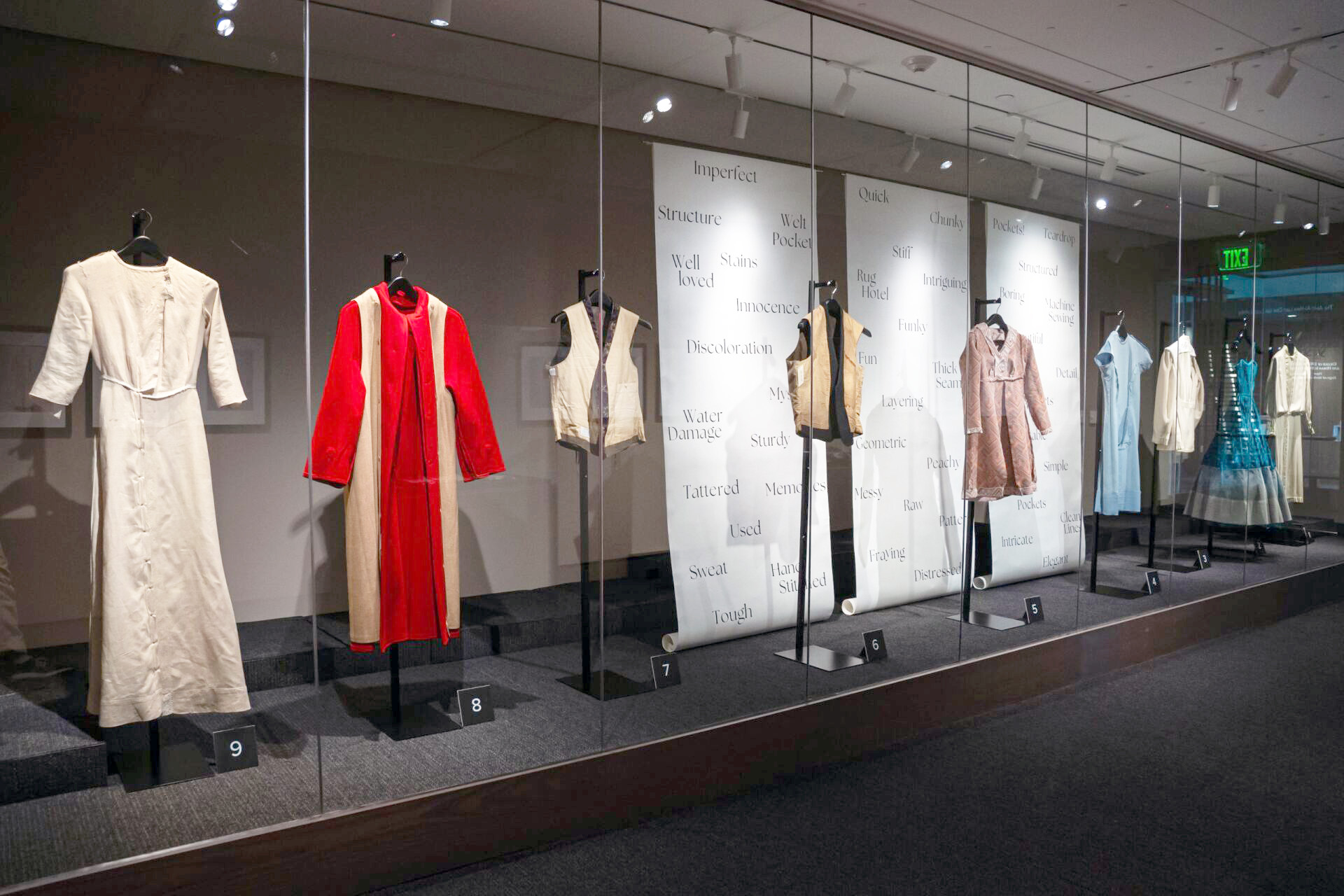
An inside look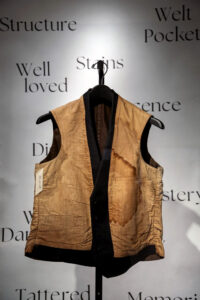
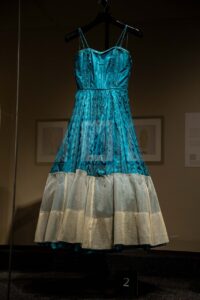
Inside Out, curated by Alaszkiewicz, provides visitors with an unusual opportunity to see details of a garment from the inside.
“Fashionable dress is designed to be worn and seen ‘right side out,’” Alaszkiewicz said. “However, the interior hides important evidence about both the maker and the wearer. Researchers and curators rely on these clues to further understand the life and meaning of a garment.”
For example, a researcher might look at labels, hems, and how the garment was sewn to understand its construction. There might also be blood or sweat stains, or areas that have been repaired that provide clues about how it was worn.
“Visitors will encounter the mystery of a name printed in small cursive letters on the lining of a waistcoat from circa 1840 and the architectural construction that supports a voluminous evening dress from the 1960s, among many others,” Alaszkiewicz said.
The text for Inside Out: Structures and Secrets is available in Spanish translation.
Avenir Museum spring events
The Avenir Museum is hosting several events this spring, including a monthly Make & Mend for visitors interested in learning to sew, Crazy Collage for visitors to make their own Mary Frances-inspired collages, a presentation by directors of the Merchant Tailor Museum and a Tie-Dye Show and Tell.
The museum, open from 11 a.m. to 5 p.m. Tuesday through Friday and 10 a.m.-4 p.m. Saturday, is in the University Center for the Arts-East Building at 216 E. Lake St. in Fort Collins. Admission is free.
The Avenir Museum is in the Department of Design and Merchandising, part of CSU’s College of Health and Human Sciences.